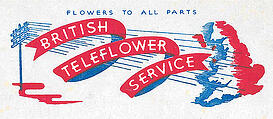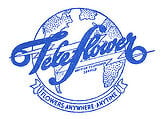The seeds of eFlorist as we know it today were sown back in 1947 by three Southampton florists – Leonard Haines, John Andrews and Herschell Sollis – who wanted to set up a membership organisation so that like-minded florists could exchange orders between one another. The company was then known as British Teleflower Service.
This was the beginning of what we now know as relay, only back in 1947 the process was a lot simpler than it is today. Orders were exchanged on a cash-with-order basis, and paperwork was kept to a minimum.
The idea took off, and before long the company had expanded into a comprehensive network of florists interacting with each other around the British Isles. Florists were attracted to the simplicity of the original scheme and the idea of generating more business through a national network of florists. No longer were florists working in isolation, they were part of an organisation that not only helped them to increase their sales, but also promoted professional floristry on a national scale.
In 1953 a milestone was reached when the company expanded in to the overseas market. In the years to follow, key contacts were established and mutual trading facilities were introduced which allowed orders to be sent overseas. This paved the way in 1971 for the International Network of Teleflor, which today has some 70,000 florists worldwide.
In 1978, the company underwent a full-scale re-organisation, changing its name to Teleflorist with a brand new logo depicting a symbol of the first recorded floral delivery - from the Old Testament, a dove, which brought Noah news of dry land. The former cash-with-order basis of trading between members was discontinued and a modern computerised central accounting system, which became central to the new Teleflorist organisation, was established.
The company outgrew its original premises in Chandler’s Ford, Hampshire and relocated in 1991 to a modern, purpose-built office in Romsey (where it continues to operate today).
Adapting to ever changing market conditions, the principles of relay and indeed the value of a membership organisation forced Teleflorist in 2007 to look beyond its existing offering and to begin work on a revolutionary new business model to better serve the needs of the florists.
In 2009, Teleflorist changed its name to eFlorist – and embarked on an ambitious evolution from a membership relay organisation to a florist services business, taking its name from its already hugely successful online ordering mechanism.
eFlorist is the face of a modern business, the heart of an online community dedicated to the same high levels of quality that those three Southampton florists shared back in 1947. They had a dream and while things may no longer look like they did back then, the high ideals and the desire to do business more successfully still hold true.
eFlorist remained a family run business until its merger with The EuroFlorist Group in 2010. The merger further strengthened the company, whilst building on the ever growing success of the established brand.
65 years on and eFlorist has successfully established a firm foothold as a global flower delivery provider and is now part of the largest florist network in Europe.














